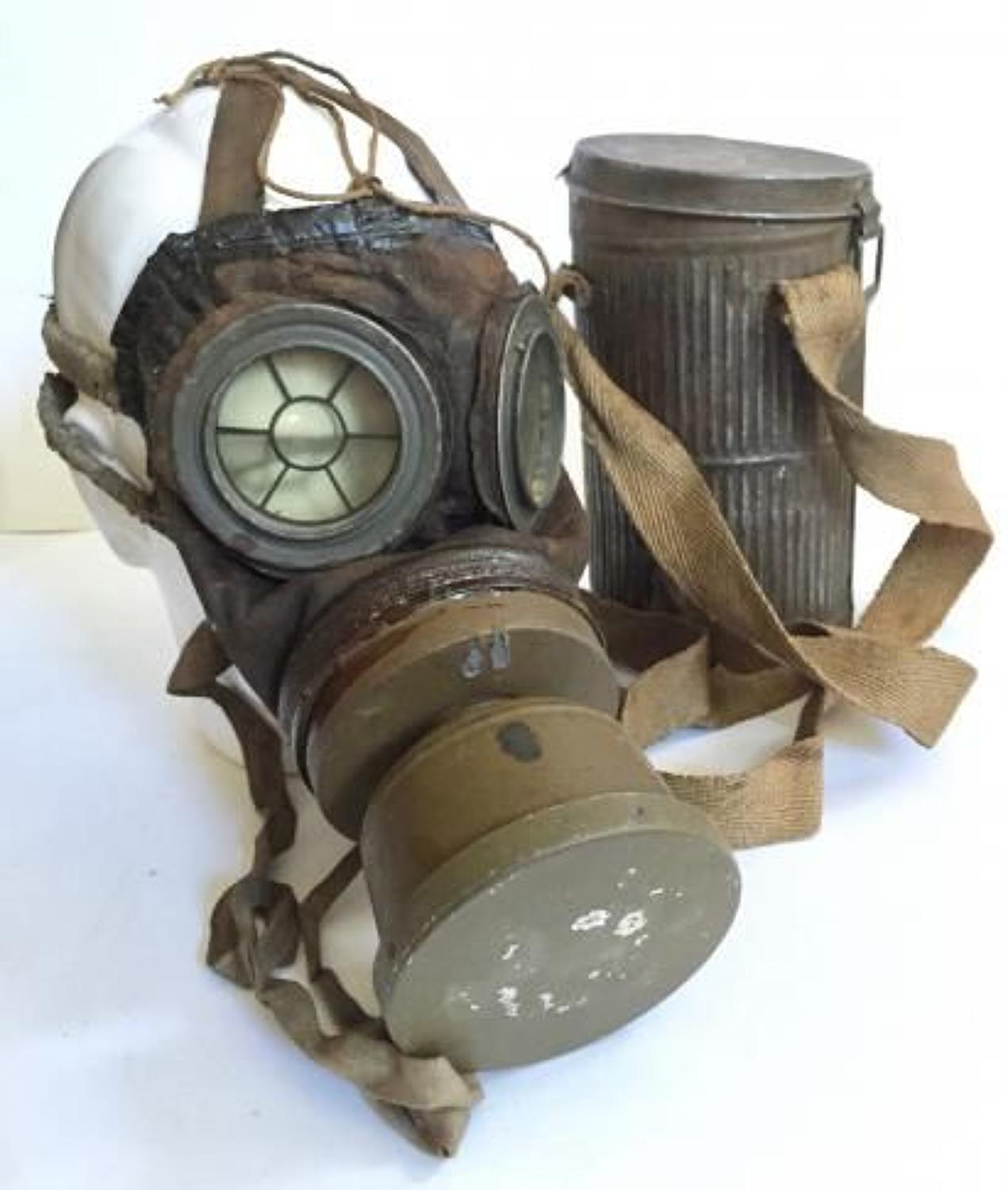


The first model of the M2 mask was introduced during March 1916 and had a rectangular piece of cellophane glass for viewing, protected by a piece of glass in front of it. During 1917, an additional mask strap was produced, intended to be worn around the head of the wearer. Instead, it was made of one piece of material which covered the face completely. In contrast with gas masks made later in the war, the M2 did not have a special filter that fit onto the mask. While switching gear, some soldiers inhaled the poison gas and became casualties. The untrained soldiers tended to put on the Small Box Respirator when first confronted with a gas attack and then switch to the M2 when they realized they would have to wear it for a long time. The US Army issued its soldiers the British-made Small Box Respirator to protect against chemical attack, and the French-made M2 gas mask in case a mask had to be worn for an extended period of time. When the United States entered World War I in 1917, it was unprepared for chemical warfare. British forces were issued 6.2 million units of the second model between May and November 1916 and used it as late as August 1918. A second model introduced in April 1916 was produced in three different sizes and included two separate eyepieces, so folding it would not cause damage. The first M2 model was produced in only one size and often incurred damage when it was folded for placement in a metal container. An order of 600,000 masks was produced in February 1916 and introduced for British forces the following month. Without Garrett Morgan, many thousand more brave souls would have fallen in the fields of France, unable to breathe amidst the haze of mustard gas.The M2 mask was based on a design proposed in 1915 by René Louis Gravereaux of Paris. The 100th anniversary of America’s entrance into World War I will occur in less than two months, and numerous black scientists played an important role in the war effort. Then in 1917 his device was modified to carry its own air supply and became the standard-issue gas mask in the U.S. But many refused to acknowledge Morgan’s heroism. In 1916, Morgan and his brother gained notoriety when they used the breathing devices to enter a tunnel filled with noxious fumes to save two men caught in a tunnel under Lake Erie after a natural gas explosion. The breathing device sold well with firefighters and rescue workers, but due to the prevailing racial prejudice of the day, Morgan had to hire a white actor to pose as the inventor during presentations of his safety hood. Remaining smoke was then filtered through a wet sponge. Morgan knew that smoke rises above air, so his device included an intake tube long enough to draw air from near the ground. But Morgan’s invention was simple and reliable. In 1912, Morgan received his first patent for an invention called the safety hood, which was a precursor to the gas mask.īefore Morgan’s invention, other safety hood devices were largely a failure: they were difficult to put on, were complex, and unreliable. It was also during this period that his curiosity about the way things work and his ability to fix machinery led him to begin creating inventions of his own. Still, Morgan was fortunate because he was able to hire a private tutor.īetween the time he moved to Cleveland, Ohio, in 18, Morgan went from repairing sewing machines to owning several businesses. Like many other black scientists during this time, Morgan succeeded in spite of limited educational opportunities - he only received a sixth-grade education - and racial prejudice his entire life. Morgan’s invention saved numerous American lives at the same time 80 percent of the black troops brought to France didn’t see combat because of racial prejudice. The gas mask, which was one of the most important inventions used by American soldiers during World War I, is largely thanks to black inventor Garrett Morgan. They were responsible for improvements to the telegraph, inventing methods for blood storage, and patenting the first modern stop light. While George Washington Carver may be the most famous to come from that time, black scientists have been credited with much more than discovering 300 different uses for the peanut. One of the ironies of the “separate, but equal” era of America was the large number of scientific achievements made by black Americans who often had much less access to education than their white counterparts.


 0 kommentar(er)
0 kommentar(er)
